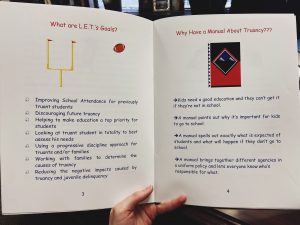Competency 9: Evaluate Individuals, Families, Groups, Organizations, and Communities
Evaluate individuals, families, groups, organizations, and communities

Evaluation is one piece of a process which has been used by practicing professionals to help, change, adjust, and revolutionize individuals and systems over the course of history. As a professional in the social work field, I value the steps of evaluation, and I have made it my goal to implement the expected and appropriate means of evaluation in all of my efforts. I have consistently used critical thinking to make observations, analyze data, communicate findings, and apply understandings. I recognize the importance of evaluation as it applies to the micro, mezzo, and macro levels of the social world. Evaluation offers me as a practicing social worker the opportunity to deliver more effective services while also expanding upon justice. I will continue to learn of effective evaluation practices from other professionals as I continue in my work.
PRACTICE BEHAVIORS:
9A: Select evidence-based evaluation strategies according to their efficacy with specific client systems.
Academic Evidence: During the Advanced Administration course, I formulated an agency proposal for an organization called Nurtured Through Nature, which aims to intervene for youth who are dealing with anxiety and depression by utilizing outdoor and adventure therapy (cognitive level: synthesis). In this agency, it is crucial that the employees are effectively utilizing their skills and competencies to deliver quality services to clients. In this proposal, I have structured an employee evaluation plan to be sure that this is the case. This evaluation plan incorporates evidence-based tools such as scales for employees and supervisors to evaluate performances based on pre-established goals, performances, and behaviors. Furthermore, this plan will include discussing and establishing goals for the next year. This process displays the values of competence because it holds agencies and employees accountable in persistently utilizing and displaying their knowledge and skills in practice. In the attachment (Self and Staff Evaluation Forms) are the evaluation forms which are used to understand how employees are doing in regards to effective practices within the agency.
Field Evidence: In my practicum setting, I attended four Truancy Treatment Team meetings throughout the year. In these gatherings, I represented Chickamauga City Schools as I joined with several Walker County educators and professionals to evaluate data and information about specific students who showed high amounts of unexcused absences. The Truancy Treatment Team is part of an established process which aims to integrate various strategies in evaluating student situations and responding to those cases in a way that will prevent further absences. In order to evaluate students, I looked at the number of unexcused absences over the course of the previous year (cognitive level: evaluation). If a student exceeded eight unexcused absences, they were met with. Furthermore, I evaluated student grades to understand if the individual was failing a class (had a grade below 60%). Throughout my time on this team, I evaluated approximately 20 students and addressed a variety of complex issues and needs which were prohibiting those students from receiving quality educational experiences. Here is a link to the journal entry where I reflect one of these experiences:Journal DEC 1.
9B: Evaluate the efficiency and effectiveness of practice outcomes across systems.
Academic Evidence: In my course on Advanced Administrative Practices, I joined a team of students to design a program which would address the needs of hospice employees who are at risk of burnout, compassion fatigue, stress, and anxiety. In this program, both a pre and post-program survey will be given to all participants in order to analyze the effectiveness of the iCARE program. By using scales to measure levels of anxiety, burnout, compassion fatigue, and turnover intention, the iCare team will survey and assess the participants prior to beginning the program along with immediately after. I have written specific, time-sensitive goals which I will compare to the survey outcomes in order to understand whether the iCARE has been efficient and effective for its intended goals (cognitive level: synthesis). In the attachment (Admin- Final Paper), page 37 starts with the survey which the team utilizes to evaluate the program.
Field Evidence: During my internship, I had the opportunity to visit the Attorney General’s Conference in Nashville, Tennessee to discuss various policies and issues which relate to students. One topic which I discussed with the attorneys is the issue of truancies. Together we discussed a previously-utilized program called the L.E.T. Program (Let’s End Truancy), which aimed to address the problem of truancies by scheduling events where an attorney would come to the school and educate parents and students about truancies. I reviewed the paper materials, including a pamphlet which was handed out to all students and parents in the program. These materials emphasized on the legal aspects of truancies, including the consequences of being truant. I found that positive aspects of this program included the straightforwardness of expressing the unfortunate reality of students who are truant. Also, I believed it was helpful to emphasize the benefits–both short and long-term–of actively participating in education. In feedback, I suggested that the program simply reduce the strong focus on punishment and legal consequences which it held as the main focus of the program (cognitive level: evaluation). Attached are some of the evaluation notes I took to share with my supervisor: LET Program Evaluation notes. The Attorney General whom I met with explained to me the statistics following the implementation of the program, expressing that following the integration of the L.E.T. program, truancies in the specified school district were reduced by an average of thirty cases a year in the three years of participating. This was especially made apparent as parents were continuously introduced to resources which could help them understand truancy as well as how to prevent truancy with their own children.
